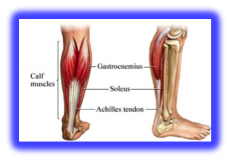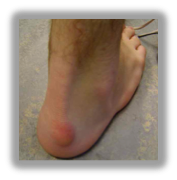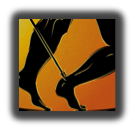Anatomy
The Achilles tendon is a shared tendon of 3 muscles: gastrocnemius, soleus, and plantaris. These muscles originate in the calf and the Achilles tendon inserts on to our heel bone, the calcaneous. Together, these three muscles help us point our toes, jump, and propel ourselves forward when running and walking. The Achilles tendon is one of 3 tendons in the body that is surrounded by a protective sheath.
Mechanism
The most common mechanism of injury for the Achilles tendon is overuse. The most significant risk factor to consider is load, are you overloading your Achilles tendon? This can occur with sudden changes in loading patterns – i.e. jumping into a plyometric routine without the proper preparation (pun intended), increasing your training schedule too quickly, or drastically changing your footwear.
Injury
When the Achilles tendon becomes irritated there is a very brief period of mild inflammation followed by a period of complex degeneration of the tendon involving pain, loss of performance, and even tendon rupture. Due to the extremely small amount of inflammation involved in an Achilles tendon injury it is no longer referred to as a tendinitis, the suffix “itis” denotes inflammation; instead, it should be referred to as a tendinopathy.
Achilles tendinopathy can be categorized into insertional and non-insertional. Insertional Achilles tendinopathy involves the portion of the tendon that is closest to the heel bone, the calcaneous, while non-insertional tendinopathy involves the portion of the tendon that is above the calcaneous. It is important to make this distinction, as the treatment should vary accordingly. Insertional Achilles tendinopathy may occur as a result of a Haglund’s Bump. A Haglund’s bump is an enlargement of the back outer part of the calcaneous. This can occur from uneven pull through the medial and lateral portions of the calf muscles. When this bump rubs against a shoe or a skate, the insertional portion of the Achilles tendon may become irritated
Aside from tendinopathy, it is also possible to irritate the sheath surrounding the Achilles tendon, which leads to tenovaginitis. When this occurs you may experience squeaking or creaking of the Achilles tendon as the sheath rubs against the tendon.
Treatment & Rehabilitation
For all of the above Achilles tendon injuries the most important factor in treatment and rehabilitation is to uncover and remove the cause of the injury. To interrupt the degeneration associated with tendinopathy we must modulate the blood flow and neural input to the area, and re-establish proper length and tensile properties of the tendon. This can be accomplished with a regimen of Active Release Therapy ®, Graston, acupuncture, and a rehabilitation program focusing on eccentric loading of the tendon. The literature also states that the use of shockwave therapy can be helpful in cases of insertional Achilles tendinopathy. Chronic cases of Achilles tendinopathy can take up to 8 weeks to heel. As such, it’s important to be committed to a therapy and rehabilitation program. Most importantly, be prudent with your training and listen to your body!
Dr. Julia Callaghan, Chiropractor,
ART ®, CSCS, Acupuncture
References:
Assimakopoulos, D. (February, 2014). Sports and Exercise Related Tendionopathies. Retrieved from: www.researchreviewservice.com
Thistle, S. (June, 2008). Low Level Laser Therapy and Eccentric Exercise for Achilles Tendinopathy. Retrieved from: www.researchreveiwservice.com
Thistle, S. (January, 2008). SWT vs. ECC for Insertional Achilles Tendinopathy. Retrieved from: www.researchreviewservice.com


